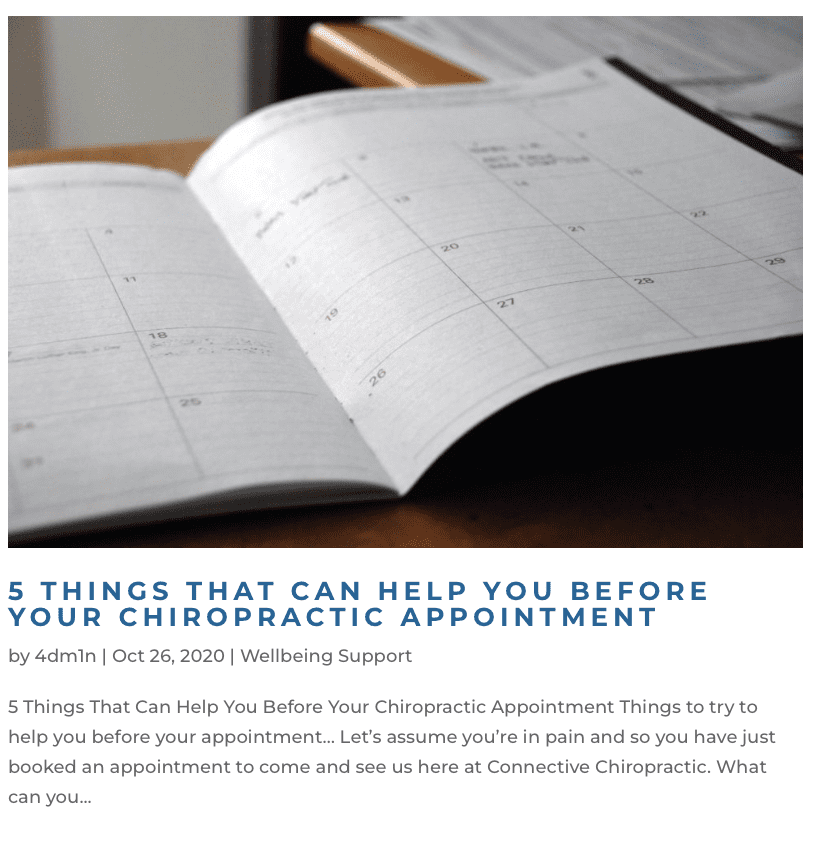Why more exercise isn't always helpful when it comes to rehabilitation
All exercises are not equal
As I have become more and more experienced as a Chiropractor, I’ve noted an ever increasing belief in Basingstoke: That more exercise will offer greater health, healing and a faster route to a reduction of pain. The reality though is that this just isn’t always the case. We find increasing numbers of our patients (certainly since the start of lockdowns) are actually injuring themselves more from their exercise than helping themselves. So, what is going on? What’s going wrong? And what’s the rationale behind the clinic encouraging people to taking a step back from strenuous exercise in the first stages of their care plan? This blog post explains all…
Stop seeing yourself as an exercise superhero!
Exercise is good for you. It’s good for your fitness and wider body health, we know. For most of us, taking a little extra exercise each day is not a bad thing. Perhaps we need to take a little extra stroll at lunch or pop to the gym another time each week? Whatever we choose, our fitness forms a key part of our health and wider strength and resilience.
The problem, and a problem we are seeing more and more, is the notion that there is no end to the benefits of exercise: The more you do, the better you become. Whilst this is true to some extent, it’s also not true for many reasons. The first reason is to do with physical boundaries such as injuries. The second reason is to do with mental mindset. Finally the third, well, it’s actually to do with realistic expectation and knowledge. You’ll be amazed at how much you’ll see online that will disagree with this post, but the reality is that too much exercise can be as destructive for your body and lifestyle as too little.
Too much exercise can be as destructive for your body and lifestyle as too little.

Reason 1: Physical limitations
We frequently hear the phrase “No pain, No gain” in clinic. Rubbish. The true gains occur when you are able to do all that you want to do (in life or with exercise) without pain, restrictions or limitations.
Pain itself is a warning signal that you’re entering areas you do not have the strength, resilience or awareness to deal with or recognise. So, if you’re pushing through the pain beyond a reasonable limit, you’re more likely to injure yourself. This is all the more so if you are trying an exercise as part of your rehabilitation from an injury: Over pushing and over exerting can really put the kibosh on your recovery time.
Workout in your stretchable zones
Yes, we know there’s pleasure in “feeling the burn”, knowing you’ve done a good workout for feeling the “DOMS” or even feeling pooped after a good run, but the reality is that (as with anything else in life), there is a stretchable zone where you can push beyond your comfort zone, and a point where things have stretched so far.
Tips to ensure you don’t overdo it
Ensure you break your exercise routine into stages. Give areas of your body rest days. Build your exercise routines over time and don’t go all in at the start. Be aware that good cardio can be bad for your body with bad form (HIIT exercises performed in poor style will stop you from doing it eventually! Be warned!) and if you’re using weights, get a spotter or record yourself to ensure you are lifting equally.
Be aware of your rehabilitation goals
Don’t come to see us and expect a raft of exercises. First, that’s the role of a physio. But second, our Chiropractic care honestly does take it out on your body. You might think that you need exercises, but everything has a time and a place. Doing too much right at the start may seem like a good idea, but you would be wrong. Give yourself a chance to overcome the initial painful stages of your condition and do what we suggest to allow you to rehabilitate and improve the success of your care in the second ‘improvement stage of care.’
Consider the rationale for exercise
Many people just blanketly believe that all exercise is good. However, if you have a muscular imbalance in your body, dare I reveal that a balanced exercise routine is doing little to nothing to help you? In this case, your time and effort is just stretching and pulling all the muscles around the problem, but not actually helping it.
Here’s when we tend to see people coming into the clinic proclaiming that they’ve “tried everything” and just can’t understand how their body is feeling so sore given how flexible or active they are. The reality, they are doing the right exercises in the wrong way. They need a tailored way to tinker with their exercise routine to ensure they are doing more of the exercises they need and less of the ones that just perpetuate what they are already doing.
It’s so easy to go wrong here. Not least because it also depends, when you don’t have professional advice, on whether your brain and body are truly connected. It’s not uncommon, for example, for patients to be sure their ache or pain is originating from one side, for us to find the cause on the other side. Imagine the effect of stretching or exercising the wrong side will have on your rehabilitation or recovery… It’s just not going to help. This is where seeking professional, high level help is wise (and dare I say it, this is more than your friendly Personal Trainer, Class instructor, Massage Therapist or friend).
Tips to ensure you know what you need to do
If you’re feeling like you’re not getting anywhere, book in for an initial consultation with us, or your local Chiropractor, Osteopath or Physiotherapist. You are not alone and we are likely to have seen what you have before.
Reason 2: Mindset and Beliefs
It’s common in some gym’s to be told to “push through the pain.” It’s not always helpful. This is not only because of the possibility you could actually be injuring yourself, but also because it sets a belief system that pain is something that either is to be feared or ignored.
Understand how pain and fear can affect you
Fear Avoidance Behaviours are rife when it comes to exercise. We find a lot of the time, patients will do one of two things because of their pain. Either they will rest up or put up with the pain, in the belief that the pain will go on its own. Here the pain can stop the person from doing activities they need or want to be doing. Alternatively, they will do more and more to try and get on top of the pain. This catastrophised fixation gets them to overwhelm their system in a vicious circle.
Both types of behaviour and mindset are really unhelpful if you want to get on top of the reason behind your ache and pain. Both of them lead to a person doing potentially the wrong thing. Indeed, we find most resistance to us giving exercises in clinic from people with fear avoidance behaviours (whichever way they go). People either don’t engage with our rehabilitation advice, or they do too much (adding it into an already crammed routine) and wonder why things are still feeling sore. We also find a lot of people demanding exercises early on to be given them and then not do them. We’ve seen it all.
Tip to avoid behaviour traps
See the wood for the trees. Take rest breaks. Identify if there are reasons why you may have a poor relationship with pain or exercises and acknowledge them. Seek professional help if needs be to tackle unhealthier beliefs relating to exercise. Question if you are doing too much, or too much of the wrong thing, as well as whether you are doing enough.
Reason 3: Understand the value of rehabilitation vs exercise
The purpose of rehabilitation where exercise is concerned is to use exercise to help you rehabilitate. Exercise on its own however, without this focus, is just helping you to train, develop muscle or to grow.
Where injury is present, simple is honestly best. We find people coming into our clinic are usually completely stumped when we offer exercises that seem really basic. “Don’t you know what you’re doing?” we can feel them say… But the reality is, even the most brazen enthusiast is often neglecting the basics and have rushed the foundations towards their exercise routines, such as muscle-targeted stretches or exercises. They may be great at the complicated motions, but struggle with the simple ones. There’s no point (in our view at least) being the next award-winning bodybuilder if lifting a shopping bag at the supermarket poses an issue for you. We’ve seen it (this is a true story), it happens.
There’s no point (in our view at least) being the next award-winning bodybuilder if lifting a shopping bag at the supermarket poses an issue for you. We’ve seen it (this is a true story), it happens.
Consider your muscles and bones like a cocktail stick sitting in the centre of a circular rubber band. If you pull one side of the rubber band the cocktail stick will move closer to it, stretching the other side out a little. This is what happens when you exercise, stretch or strain your muscles (the rubber band in this metaphor). It affects structural components (the cocktail stick) across the wider body but also muscles and structures elsewhere too. Knowing what to exercise and how best to manage it for greater effect gives you the ability to pluck the other side of the rubber band and make a wider body change, rather than keep doing the same thing over and over and expecting different results.
Reserve your appointment at Connective Chiropractic here
Need our help? Reserve and pay for your initial Chiropractic or Massage Care at Connective Chiropractic by clicking this link.
Enhancing Chiropractic With Music: A Research Study
The Power of Music at Connective Chiropractic Are you ready to tune into a new dimension of chiropractic care? At Connective Chiropractic in Basingstoke, we're delving into the powerful combination of chiropractic and music to elevate your experience and outcomes with...
Connecting chiropractic and stress reduction
Did you know that chiropractic can help with the inability to relax? In today's fast-paced world, stress has become an unavoidable part of daily life for many people. Whether it's due to work pressures, financial worries, relationship issues, or other factors, stress...
Starting your journey with us at 55 Kingsclere Road: Getting to Connective Chiropractic
Get directions to our clinic before you start your journey Getting our address or contact details is one thing, knowing what to expect when you get here, or whether you are in the right place, is another. To take the stress out of your journey, we've decided to create...
BASINGSTOKE
Connective Chiropractic Ltd,
55 Kingsclere Road,
Basingstoke.
RG21 6XG
01256 639 452

EMPOWERING WELLBEING WITH A CONNECTIVE CHIROPRACTIC MEMBERSHIP
Click here to discover more about our Ultimate Wellbeing Community
Registered Company (10788728) in England & Wales, Registered Address: 55 Kingsclere Road, Basingstoke, Hampshire. RG21 6XG.
Site content last edited 11 September 2023 (Version 1.4) (Version 1.0 - 1st November 2017). Last update Monday 11 September 2023
Copyright: Connective Chiropractic Ltd. All rights reserved. The Connective Chiropractic name and Connective Chiropractic logo are registered trademarks.




